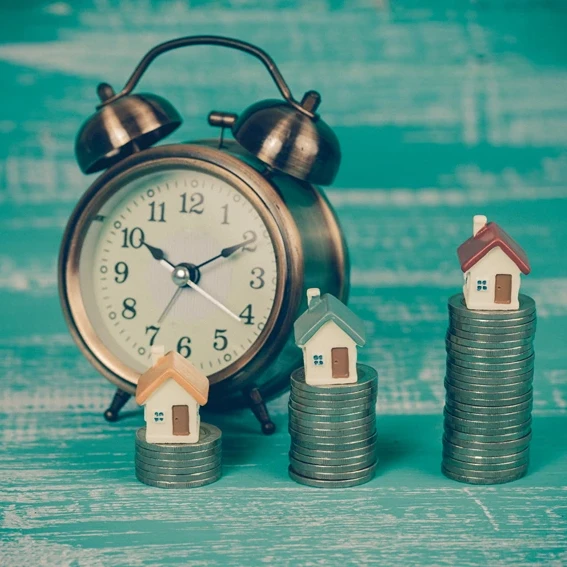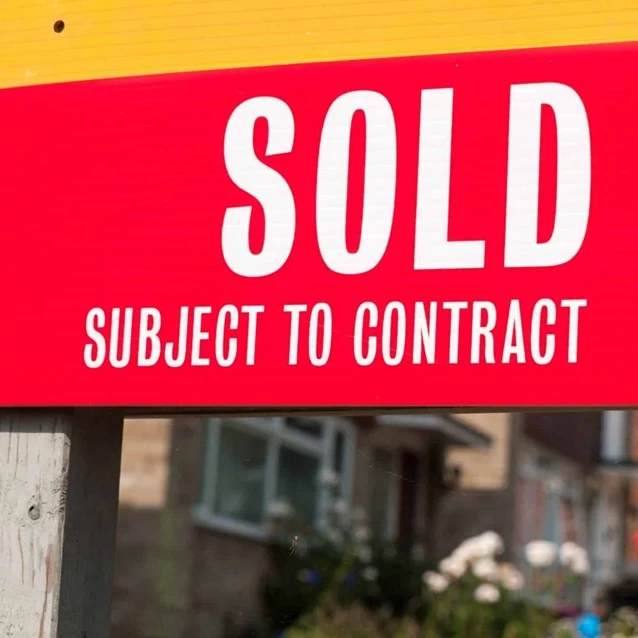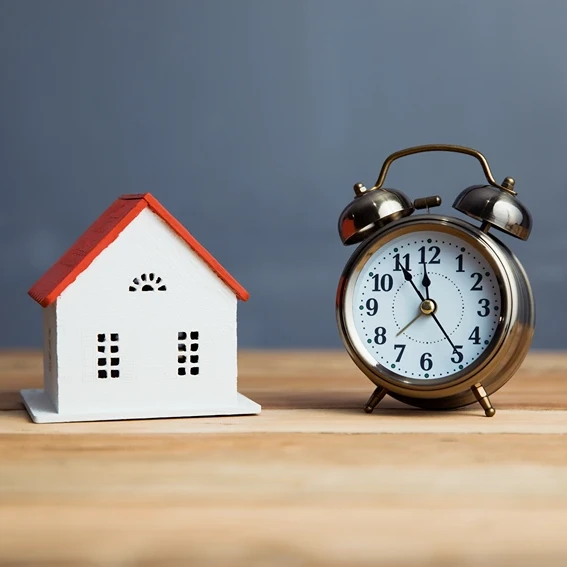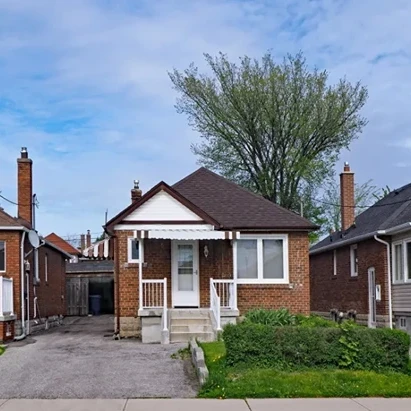Are you looking to sell a leasehold property in Scotland but feel entangled in the complexities of the process? Understanding the nuances of leasehold sales, including the legalities and the actual process of transferring ownership, is critical to your success. Dive into the essential insights that will demystify the lease transfer process and equip you with knowledge about your leasehold premisesleasehold property, making it a straightforward, less daunting task. Understanding whether a leasehold property is right for you can be crucial in making informed decisions about your real estate investments. This knowledge not only aids in selling but also in buying properties that align with your long-term goals., making it a straightforward, less daunting task.
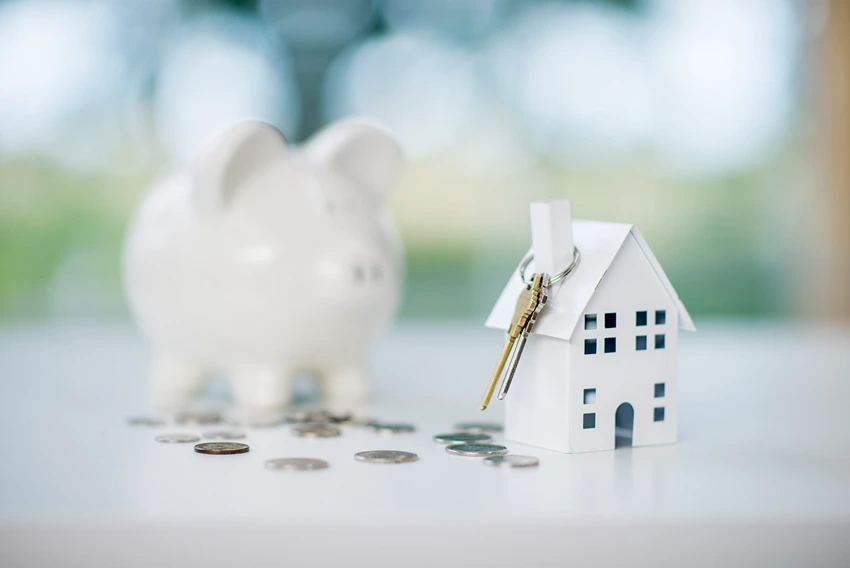
Can You Sell a Leasehold Property in Scotland?
Yes, you can sell a leasehold property in Scotland. The process, while specific and occasionally complex, is certainly achievable. Just as there are unique challenges when selling a house over a mine shaft, selling a leasehold property requires a thorough understanding of the legalities and preparationclosing costs. Understanding who shoulders the closing costs can significantly impact your financial planning when selling a leasehold property. These costs can include legal fees, search fees, and other expenses that need to be factored into your overall budget.. Both scenarios demand a keen eye for detail and an awareness of potential pitfalls that could impact the sale. It involves a firm grasp of the legalities, thorough preparation for the transfer of leasehold ownership, and an in-depth understanding of the leasehold premisesleasehold property, making it a straightforward, less daunting task. Understanding whether a leasehold property is right for you can be crucial in making informed decisions about your real estate investments. This knowledge not only aids in selling but also in buying properties that align with your long-term goals.. Let’s delve into these key areas.
Understanding the Legalities of Leasehold Sales in Scotland
In Scotland, the legality of selling a leasehold property hinges upon the terms and conditions outlined in the lease agreement. It’s crucial to review the agreement to identify any restrictions or obligations that may affect the sale. The lease agreement will have clauses that specify how a property can be sold, which might include seeking the landlord’s consent or following particular procedures.
The Process of Transferring Leasehold Ownership
Transferring leasehold ownershiplease options in property selling in Scotland is a multi-step process which typically requires: Finding a buyer who is willing to take over the remaining lease term. Exploring various lease options can provide more flexibility and potentially expedite the sale process. is a multi-step process which typically requires:
- Finding a buyer who is willing to take over the remaining lease term.
- Notifying the landlord about the intended sale and following any stipulations for approval as laid out in the lease.
- Enlisting a solicitor experienced in Scottish property law to handle the legal aspect of the sale. This involves drafting a new lease agreement for the buyer or transferring the existing lease into their name.
Importance of Understanding the Leasehold Premises
When selling a leasehold property, it’s important to be transparent about the details of the premises. This includes:
- Outlining the extent and limitations of the property, what is included in the sale, and the responsibilities the leaseholder must adhere to.
- Disclosing ongoing costs such as service charges, ground rent, and any anticipated major expenditures.
- Highlighting the length of the remaining lease, as this can significantly impact the property’s value and attractiveness to potential buyers.
For more insights and proposals on ownership and management of leaseholds, consider reviewing the government’s latest suggestions which can provide a deeper understanding of your position as a seller and future reforms that could affect leaseholds.
Remember, selling a leasehold property in Scotland requires due diligence and a clear grasp of your rights and responsibilities. Preparing yourself with the right knowledge and legal expertise ensures a smoother transaction and can expedite the sale process.
What Are the Key Legal Considerations for Selling Leasehold Property?
When you’re gearing up to sell your leasehold property, you’re taking on a process that’s a bit different from selling a freehold. So, can you sell a leasehold property easily? Yes, but it involves a few more layers of legal considerations.
Leasehold Conveyancing: What Does It Entail?
Leasehold conveyancing is the process of transferring the ownership of a property from one person to another. However, unlike freehold, you’re transferring the remainder of a lease instead of outright ownership. Here’s what it typically includes:
- Examining the lease: Solicitors look into the terms, conditions, and length of the lease, crucial for the buyer.
- Dealing with covenants: These are the rules you must adhere to, contained within the lease which can be found on Net Lawman.
- Engaging with the freeholder: They often have to be informed, as they may have the first option to buy or might need to approve the new leaseholder.
- Managing service charges and related costs: Ensuring these are settled up to date and arrangements are made for future payments.
Legal Requirements for Selling Leasehold Property
To sell your leasehold property legallysell a house with a mortgage. Just like selling a house with a mortgage, selling a leasehold property involves specific legal steps and documentation to ensure a smooth transaction. Being well-prepared can help you navigate these complexities with ease., you’ll need to:
- Provide a copy of your lease.
- Offer up-to-date information on service charges and management fees.
- Supply a property information form, which can include various details about alterations and disputes.
It’s essential to be transparent to avoid any legal snags that could slow down or even halt the sale.
The Role of Leasehold Solicitors in Facilitating Sales
Leasehold solicitors specialise in the complexities that leaseholds bring. They are instrumental in several ways:
- Advising on lease terms: They help you understand how the lease affects the sale.
- Liaising between parties: They communicate with the freeholder, the buyer’s solicitors, and you.
- Preparing the contract pack: Including the lease, management information, and forms.
While selling leasehold property requires extra steps and knowing the ropes, partnering with the right solicitor can smooth out the journey, ensuring all leasehold conveyancing considerations are addressed effectively.

How Does the Length of the Lease Affect the Sale?
Can you sell a leasehold property with a short lease? Yes, you can, but it might be harder. The length of the unexpired lease term has a significant impact on how easy it is to sell. Here’s what you need to know:
Impact of Unexpired Lease Term on Marketability
- The unexpired lease term is the remaining time left on the lease; the shorter it becomes, the less marketable your property may be.
- Buyers often struggle to get mortgages on properties with less than 70-80 years left on the lease, making it harder to sell.
- A short lease can also decrease the value of the property.
Benefits and Process of Extending the Lease Before Selling
- Extending the lease can increase the market value and sale prospects.
- It can make the property more attractive to buyers and lenders.
- The process typically involves negotiating with the freeholder for a lease extension.
- There can be costs involved, but it’s often worth it to facilitate a sale.
Leasehold Enfranchisement Rights in Scotland
- In Scotland, the situation differs slightly from elsewhere in the UK.
- Leasehold enfranchisement rights allow you to purchase the freehold of the property or extend the lease.
- Understanding these rights is crucial to taking advantage of them properly.
For detailed guidance on what happens when a leasehold ends, and how this could affect your sale, check What happens when a leasehold ends.
Remember, if you’re considering selling your leasehold property, taking steps to address the length of the lease can be a game-changer. Extending your lease or understanding enfranchisement rights in Scotland can ensure you get the best deal possible. Time to strengthen your position; approach these aspects with confidence!
What Preparations are Required Before Putting a Leasehold Property on the Market?
Before you put your leasehold property on the market, there are several key steps to take and essential information to gather to ensure a smooth and successful sale.
- Leasehold Pre-sale Preparation
Firstly, it’s important to understand your lease terms and any conditions that could affect the sale. You should also ensure that you’re up to date with ground rent and service charge payments, as outstanding debts can complicate the sale process. - Preparing Your Leasehold Flat for the Market
When preparing your leasehold flat for viewings, consider the following:- Tidying and decluttering to showcase the space.
- Addressing any maintenance issues that could negatively impact buyer perception.
- Staging your flat to highlight its best features and potential.
- Compiling a Comprehensive Leasehold Information Pack
Assemble all necessary documents that provide clear information about the leasehold. This information pack might include:
- A copy of the lease.
- Recent service charge and ground rent receipts.
- A statement of account for any ongoing costs.
- Details of the building’s insurance.
- Minutes from the last few meetings of the freehold or management company, if applicable.
Creating a comprehensive leasehold information pack can be extremely helpful for buyers, as it provides transparency and can answer many questions upfront, facilitating trust and streamlining the sale process.
By taking these preparatory steps diligently, you increase the chances of a quicker, smoother selling experience. This preparation demonstrates to potential buyers that the property is well-managed, potentially making your leasehold property more attractive in the competitive market.

How Can You Determine the Value of Your Leasehold Property?
Are you wondering how much your leasehold property is worth? It’s essential to have an accurate valuationhow much is my house worth before putting it on the market. Knowing the precise value of your property can help you set a competitive asking price, ensuring you attract serious buyers and achieve a successful sale. before putting it on the market. Let’s look at how you can set a realistic selling price for your leasehold property.
- Approaches for calculating leasehold value
Calculating the value of leasehold property takes a slightly different approach compared to freehold properties. The remaining length of the lease is a significant factor that inversely affects the property’s value – the shorter the lease, the less the property is likely to fetch on the market. - Appraising leasehold properties: Common valuation methods
Valuation methods for leasehold properties typically involve an analysis of recent sales of comparable leasehold properties in the area, also known as ‘comparative analysis’. Other factors such as property condition, location, and market trends are also taken into account. It can be quite technical, so many opt for professional valuation services. - Setting a realistic selling price
Once you have an understanding of your property’s value, setting a realistic asking price is crucial. It should reflect both the current market and the specifics of your leasehold arrangement. Pricing too high can deter potential buyers, while pricing too low could mean you don’t get the full value of your investment.
Calculating leasehold value may seem daunting, but it doesn’t have to be. Start with a visit to Zoopla to get an estimated value and consider a professional valuation to get the most accurate figure. With the right valuation methods, you can confidently set a competitive and realistic price for your leasehold property.
What Documents Are Necessary for Selling a Leasehold Property?
Are you wondering what paperwork you need to sell a leasehold property? Here’s what you should focus on:
- Essential documentation: You’ll need a comprehensive leasehold sale paperwork checklist to ensure you’ve got everything required. This typically includes your lease, an up-to-date ground rent receipt, and a service charge statement.
- Lease assignment agreement: A crucial document which formally transfers the lease from you to the buyer. It should outline the terms of the sale and any obligations the new leaseholder will have.
Further details on the necessary documentation can be found at HomeOwners Alliance.
Additionally, if you’re selling a leasehold property in Scotland, there are some unique documents you should be aware of:
- Property Enquiry Certificate: This verifies the local council’s charges and any statutory notices against the property.
- Land and Building Transaction Tax (LBTT) Return: Scotland’s equivalent of Stamp Duty Land Tax which must be completed for most property transactions.
- Alterations documentation: If you or previous owners have made alterations to the leasehold property, you’ll need the appropriate consents and building warrants to pass on to the buyer.
Remember, it’s essential to be well-prepared with the correct paperwork to avoid delays in the sales process. Ensure you’ve got everything in place and reach out to a conveyancing solicitor familiar with Scottish property law for specialist advice.
How Can You Navigate Negotiations and Conclude the Sale?
When you’re ready to sell your leasehold property, knowing how to handle negotiations and progress towards completion is essential. Can you sell a leasehold property by skillfully negotiating lease terms with buyers and completing the sale? Absolutely, and here’s how you can do it:
- Effective strategies for negotiating lease terms with potential buyers:
- Be clear about the remaining lease term and any associated service charges or ground rent.
- Address any concerns or queries the buyers may have regarding the lease.
- Be prepared to discuss the possibility of extending the lease if it’s short, as this can greatly affect the property’s value.
- Steps towards completing the leasehold property sale:
- Once you have an offer, work with your solicitor or conveyancer to ensure all the necessary checks and paperwork are in order.
- Ensure you have an Energy Performance Certificate (EPC) ready for potential buyers.
- Agree on a completion date that works for both parties.
- Drafting and understanding the leasehold sale agreement:
- Clarify all the terms and conditions stated in the agreement, making sure they align with the initial negotiations.
- Your solicitor should prepare a draft contract for you and the buyer to review, which will include all the details about the sale.
For a more detailed understanding of leasehold conveyancing, that link is a valuable resource that walks you through the conveyancing process.
Being well-informed, prepared for buyer inquiries, and having a clear understanding of the leasehold agreement before you start can make selling your property a smooth and successful venture.
What Are the Common Challenges and Solutions When Selling Leasehold Property?
When you’re looking to sell leasehold property, it’s essential to be aware of potential pitfalls that could disrupt the process. Here are some key challenges and solutions:
- Identifying potential pitfalls in selling leasehold property:
- Understanding your lease: Before you sell, know the terms, conditions, and any restrictions that could impact the sale.
- Lease length: Buyers may be put off by short leases. A lease with less than 80 years remaining can be harder to sell and may reduce the property value.
- Service charges and ground rent: High or unreasonable charges can deter buyers. Ensure you have a clear record of these expenses for potential buyers to assess.
- Understanding the implications of the Leasehold Reform Act:
- This act aims to make it easier and cheaper for leaseholders to buy their freehold or extend their lease. Leasehold reforms announced by the government could change the game, giving leaseholders more rights and potentially affecting the marketability of your property.
- Overcoming common challenges to ensure a successful sale:
- Transparent communication: Be open with potential buyers about the leasehold details to establish trust and avoid any last-minute surprises or disputes.
- Professional valuation: Have your property professionally valued, taking into account the leasehold nature to set a realistic price that reflects the market.
- Legal advice: Engage a solicitor experienced in leasehold property sales to help navigate the specific legal requirements of selling a leasehold.
Selling a leasehold property can indeed be complex, but with proper preparation and awareness of these challenges and solutions, you can navigate the process smoothly and successfully complete the sale.
Can You Sell a Leasehold Property Easily?
Can you sell a leasehold property?
Yes, you can certainly sell a leasehold property, although the process involves several specifics you need to understand and manage effectively.
If you’re looking to sell a leasehold property in Scotland, you’re engaging in a legally recognized transaction. Still, it’s crucial to be well informed about the process and what it entails.
Here’s what you need to consider:
Understanding the Legalities of Leasehold Sales in Scotland
Selling a leasehold property means you’re transferring the remaining period of the lease to the buyer while adhering to the terms laid out within the lease agreement itself. The leasehold system in Scotland has its unique legal framework, so it’s imperative to understand your rights and responsibilities.
The Process of Transferring Leasehold Ownership
Transferring leasehold ownershiplease options in property selling in Scotland is a multi-step process which typically requires: Finding a buyer who is willing to take over the remaining lease term. Exploring various lease options can provide more flexibility and potentially expedite the sale process. requires a comprehensive approach:
- You’ll need to ensure all leasehold obligations are clear and current.
- It’s recommended you consult with a solicitor who specializes in Scottish property law.
- Legal paperwork will need to be prepared, which will include your covenant to transfer the remaining lease benefits and responsibilities to the new owner.
Importance of Understanding the Leasehold Premises
Recognize the importance of the premises itself. Buyers will be especially cognizant of the state of the property and any obligations that come with it. Dive deep into the terms of the lease, ensure maintenance issues are resolved, and ascertain that service charges are fair and up-to-date.
The Scottish Government has put forth proposals to ease the ownership for leaseholders and potentially improve the market for selling leasehold properties.
Remember, when considering selling your leasehold property, the key to a smooth and successful transaction is being well-prepared, seeking the right legal advice, and ensuring clear communication with potential buyers. By doing so, you can navigate through the complexities of leasehold transactions with greater confidence and efficiency.

Conclusion
Navigating the intricacies of selling a leasehold property in Scotland demands a firm grasp of legal considerations, an understanding of how the unexpired lease term affects marketability, and the importance of thorough preparation. Whether it’s honing in on the leasehold conveyancing process, evaluating your property’s value, or compiling the necessary paperwork, each step is crucial for a streamlined sale. Remember, addressing potential challenges with informed strategies and having professionals like leasehold solicitors to guide you can significantly ease the process. If you take these insights on board, you’re well on your way to negotiating a favourable lease term with buyers and confidently advancing towards a successful sale of your leasehold property.
FAQ
Can I sell a leasehold property in Scotland?
Yes, you can sell a leasehold property in Scotland, noting:
- The legal process involves understanding specific terms and conditions of the lease.
- A solicitor with expertise in Scottish property law should be consulted for the transfer.
- It’s essential to be aware of and comply with any landlord stipulations stated in the lease agreement.
What are the steps to transfer leasehold ownership?
Transferring leasehold ownershiplease options in property selling in Scotland is a multi-step process which typically requires: Finding a buyer who is willing to take over the remaining lease term. Exploring various lease options can provide more flexibility and potentially expedite the sale process. in Scotland requires:
- Finding a buyer agreeable to the existing lease terms.
- Notifying the landlord as per lease requirements for their approval.
- Involving a solicitor to manage the legalities, including lease transfer or creation.
How do lease terms impact the sale of a leasehold property?
The lease terms significantly impact the sale, as:
- They dictate conditions under which the property can be sold, such as acquiring landlord consent.
- Restrictions in the lease can influence the marketability and value of the property.
- Potential buyers need transparent information regarding the lease, ongoing costs, and lease duration.
What preparations should be made before selling a leasehold property?
Prepare diligently by:
- Reviewing your lease to understand sale affecting conditions.
- Compiling a leasehold information pack with up-to-date payments and relevant property details.
- Ensuring property presentation is optimal for viewings.
How can you determine your leasehold property’s value?
To determine leasehold property’s value, consider the following:
- Engage a professional for an accurate valuationhow much is my house worth before putting it on the market. Knowing the precise value of your property can help you set a competitive asking price, ensuring you attract serious buyers and achieve a successful sale., particularly taking the remaining lease length into account.
- Use comparatives of recent similar leasehold sales in the area.
- Set a realistic price reflective of the lease specifics and market conditions.
Robbie Jamieson
Robbie’s passion for real estate extends beyond the conventional, bringing fresh and dynamic ideas to the table. His expertise in leveraging online platforms ensures that your home receives the attention it deserves in today’s competitive market.
Related Posts
Can You Fix an Unmortgageable House
August 29, 2024
Struggling with unmortgageable property? Find out what makes a property hard to finance and how to navigate the sale process effectively.
How Much Does Subsidence Devalue Property
August 21, 2024
Concerned how much subsidence could devalue your property? Get expert insights on the financial impact and solutions in our guide.
How Long to Sell a House? Quick Sale Insights
August 20, 2024
Curious about how long it takes to sell a house? Read on for expert insights and guidance on the Scottish market.
How Many Viewings to Sell a House
August 16, 2024
Ever wondered how many viewings to sell a house quickly? Get statistics, tips, and strategies for a swift UK property sale.
What Does Sold STC Really Mean for Your Sale
August 15, 2024
Curious about ‘Sold STC’ meaning? Our blog demystifies the term for buyers & sellers navigating UK property sales.
Selling a House Over a Mine Shaft? What You Need to Know
August 9, 2024
Selling your house with a mine shaft? Get expert tips on value assessment, legalities & buyer reassurance. Navigate mine shaft property sales with confidence.
Can You Sell a House with a Mortgage Easily
July 23, 2024
Curious if you can sell a house with a mortgage? Get the facts on legalities and logistics in our latest post.
How Long Does It Really Take to Sell a House
July 15, 2024
Wondering what is the average time to sell a house in Scotland? Get the facts and strategies for a quick sale with our guide.
Do Bungalows Sell Quickly? The Data Will Shock You
July 12, 2024
Wonder if bungalows sell quickly? Our latest post delves into the Scottish market, with tips to expedite your sale.
Is Buying Property Solo Doable in Scotland?
July 3, 2024
Is it possible to buy a property on your own? Yes, with the right info on solo buying in Scotland, you can! Get solo property tips here.





